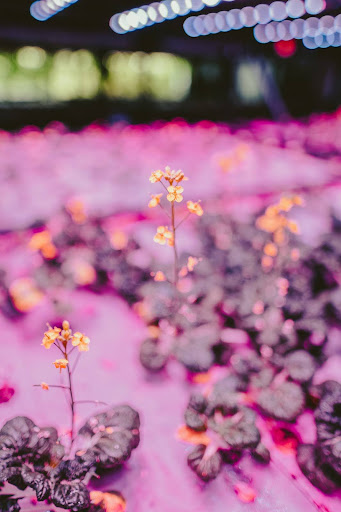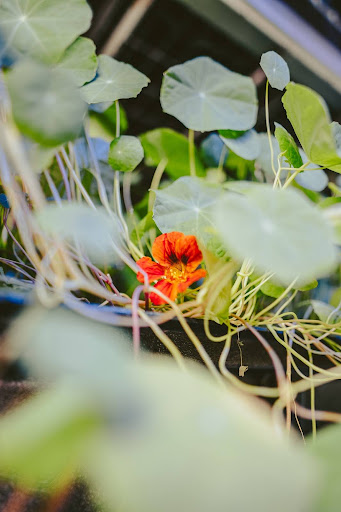Top 10 Edible Flowers Every Chef Should Know (and How to Use Them)
Whether you’re a home cook or a Michelin-starred chef, edible flowers are an incredible way to elevate your food. These botanical beauties are not only visually and aromatically stunning—they also carry surprising nutritional benefits.
In this guide, we’ll walk you through the top 10 edible flowers every chef should know, along with their flavor profiles, usage tips, and creative presentation ideas. From delicate violets to peppery nasturtiums, it’s time to explore floral creativity in the kitchen.
Why Cook with Edible Flowers?

A Feast for the Senses
Edible flowers are nature’s most colorful, flavorful, and whimsical ingredients. They enhance visual appeal, aroma, and flavor while also adding nutritional value to your dishes. Their delicate flavors and striking visuals create memorable dining experiences—from appetizers to desserts and drinks.
Nutritional Powerhouses
The rising popularity of edible flowers isn’t just about looks. Many are rich in essential minerals like magnesium, phosphorus, and potassium. Their pollen, nectar, petals, and stems offer bioactive compounds such as phenolics and flavonoids, which bring antioxidant, anti-inflammatory, and antimicrobial benefits.Flowers like calendula, chamomile, and hibiscus offer both flavor and healing properties—making them the perfect combination of beauty and function. For health-conscious diners, edible flowers are a flavorful, functional addition to any plate.
The Top 10 Edible Flowers and How to Use Them
1. Nasturtium
Flavor Profile: Peppery with radish-like heat
Best Uses: Whole flowers in salads, herb butters, pestos, and sandwich fillings
Why It Stands Out: A bold, spicy flower that adds both color and zing—great as a watercress substitute.
2. Viola (Pansies and Violets)
Flavor Profile: Mildly sweet and grassy
Best Uses: Garnishes for desserts, cocktails, iced teas, and cookie toppings
Why It Stands Out: Delicate and versatile; freeze into ice cubes for upscale drinks.
3. Calendula (Pot Marigold)
Flavor Profile: Tangy and slightly bitter, similar to saffron
Best Uses: Saffron substitute in risottos, soups, tea blends, and infused salts
Why It Stands Out: Vibrant yellow-orange petals brighten any dish—just use petals, not the bitter base.
4. Chamomile
Flavor Profile: Apple-like with sweet honey notes
Best Uses: incorporated into tea blends, syrups, custards, creams, and lemon desserts
Why It Stands Out: A floral staple with calming properties and classic appeal.
5. Borage
Flavor Profile: Crisp and cucumber-like
Best Uses: Garnish for chilled soups, salads, and gin cocktails
Why It Stands Out: Cool, refreshing, and visually striking with blue-lavender petals.
6. Hibiscus
Flavor Profile: Tart and cranberry-like
Best Uses: Syrups, jellies, teas, vinaigrettes, and glazes
Why It Stands Out: Packed with vitamin C and antioxidants, this flower boosts both immunity and flavor.
7. Chive Blossoms
Flavor Profile: Mild onion and garlic
Best Uses: Vinegars, butters, mashed potatoes, savory tarts, and quiches
Why It Stands Out: Pom-pom shaped with purple hues, these blossoms add a sharp, savory kick.
8. Lavender
Flavor Profile: Floral, slightly citrusy, and sweet (use sparingly!)
Best Uses: Infused into honey, baked goods, spice rubs, and lemonades
Why It Stands Out: Distinct and soothing—best in small amounts to avoid overpowering dishes.
9. Rose
Flavor Profile: Sweet, floral, and aromatic
Best Uses: Syrups, milk, jams, jellies, ice cream, and cake decor
Why It Stands Out: A timeless choice for romantic dishes and dreamy desserts.
10. Dianthus (Carnations and Pinks)
Flavor Profile: Spicy and clove-like
Best Uses: Candied petals for cake décor, chocolate pairings, and berry-based desserts
Why It Stands Out: A complex floral flavor that’s both unexpected and elegant.
Creative Ways to Cook with Edible Flowers
Savory Dishes with Floral Accents
Edible flowers aren’t just for dainty dishes. Flowers like chive blossoms, dianthus, and nasturtium bring bold, savory notes to meals. Try:
- Nasturtium pesto with pasta
- Chive blossom compound butter for steaks or roasted vegetables
- Lavender-infused olive oil over creamy soups
Floral Desserts and Drinks
Bring floral notes into the sweeter side of your menu:
- Chamomile shortbread
- Rosewater panna cotta
- Lavender-infused honey for yogurt bowls
- Floral ice cubes for sparkling drinks
Beyond Beauty: The Functional Art of Edible Flowers
How to Plate with Intention
Think beyond the bloom. Consider color palettes, flavor harmony, and dish composition. Use:
- Smaller flowers for appetizers
- Whole blossoms in salads
- Petals for cake decorating and plated desserts
Pairing Flowers with Flavor
- Peppery/tangy: Nasturtium, Calendula – perfect for salads and savory dishes
- Sweet/citrus/honey: Lavender, Rose, Chamomile, Viola – best for desserts and teas
- Savory/spicy: Chive Blossoms, Dianthus – ideal for compound butters and roasts
Don’t be afraid to mix floral notes into unexpected dishes. The contrast can be deliciously memorable.
Come, Elevate Your Dishes with Edible Flowers!

At Balance Farms, we’re committed to delivering fresh, high-quality, sustainably cultivated edible flowers. From borage and nasturtium to chive blossoms, calendula, lavender, and beyond, we offer a diverse selection to support your culinary creativity.
We focus on reducing environmental impact while providing ingredients that help chefs tell richer, more flavorful stories through food.
Edible flowers are more than a garnish—they’re a chance to layer sensory beauty, enhance health benefits, and spark imagination.
Ready to bloom on your next plate? Visit our website and Start your edible flower journey today!
